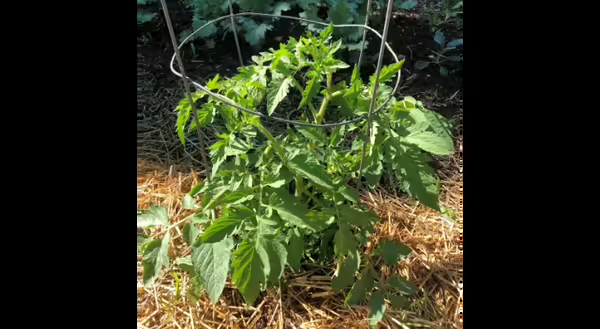
Nothing beats a homegrown tomato! Even when in season, the store bought varieties just cannot compare to a fully ripe tomato harvested at its peak from your own garden. So many gardeners across American choose tomato plants for their garden each year for this reason, making it the most planted garden crop in the US.
I receive a lot of questions about tomato care each growing season, with many focused on disease control later in the season as pathogens prevail on infected tomato plants. This year, get a step ahead of tomato problems with a plan to combat the most common issues central Illinois gardeners encounter each summer.
Perhaps the premier pest on tomato plants, the tomato hornworm, is nearing its debut for the 2019 growing season. These defoliating larva emerge from pupa in July after overwintering in the soil. They are native to North America with a large home range spanning sea to sea.
It is often very easy to identify the damage that ensues after they hatch. The little critters are big consumers of leaves, fruits and smaller stems on tomato plants leaving very noticeable damage in as little as a day. I have always had excellent control from timely hand removal of these caterpillars. It does take a watchful eye to notice damage promptly and remove the culprit. During daytime, these guys hang out in the shady lower portion of the plant, waiting for their favorite time to feed which is after dark. At night, they are easily found feeding in the tip-tops of plants. I make the rounds each evening to easily pluck them off the branch tips as opposed to a more difficult daytime search.
Early blight is a foliar disease caused by the fungal pathogen, Alternaria solani. It appears as yellow spots on lower leaves which enlarge into dark brown spots, eventually withering and killing infected leaves. The disease always originates on lower, older leaves and moves upward, creating a noticeable pattern. As the infection worsens, it is known to attack petioles, stems and fruits also. Alternaria solani overwinters in infected plant debris at or near the soil surface. During favorable spring conditions, the fungi produce spores that are spread by splashing rain drops or wind to infect leaves.
Since this pathogen moves from soil to leaves, a mulch barrier is one of the most effective control measures. In fact, I’ve had excellent control of this condition simply by mulching immediately after planting my tomatoes, offering no opportunity for rain drops to splash the fungi up onto leaves. Watering plants with drip irrigation can also help immensely.
Providing good air circulation from staking and some light pruning can limit its spread by reducing favorable conditions, such as wet leaves. Preventative fungicides (cholorothalonil or mancozeb) may also be used to limit infection and spread, although I have never had to use any, accomplishing adequate control from cultural measures such as mulching, staking and pruning. It’s important to remember that fungicides only stop new infection, they do not treat foliage that is already infected.
Septoria leafspot is another fungal pathogen that infects leaf tissues. It is characterized by small black spots on leaves, with centers that later turn white and develop tiny black dots. This disease also begins on lower leaves, thriving in wet weather and spreading up the plant. It is transmitted from the soil, much like early blight, with control recommendations identical for each pathogen.
Both of these fungal diseases can also be addressed by keeping plants healthy to limit susceptibility. Good fertilization (but not over fertilization) is part of that strategy including a starter fertilizer at the time of planting, a side-dress application when fruits are about golf ball sized, followed by 2 more applications (spaced out 3-6weeks) throughout the growing season. Follow product instructions for the recommended rate for each application.
Blossom end rot is another very common problem on tomatoes that is not caused by a pathogen but rather it is a physiologic condition of tomato plants related to the soil environment, which limits calcium uptake. It is characterized by large dead spots on developing tomatoes, often becoming brown and leathery before secondary fungi move in to rot the fruit.
Developing tomatoes need a lot of calcium to support rapid growth. Although calcium is plentiful in the soil, it must be in dissolved in water for plant uptake. Greatly fluctuating soil moisture, with extreme swings from wet to dry, can disrupt calcium uptake which often leads to blossom end rot as fruits develop. A simple solution to this issue is also mulching, which will regulate extremes. Appropriate watering as needed from fruit formation to maturity will also limit extremes and maintain a more uniform soil moisture.
Some simple steps now, such as mulching, staking, and appropriate watering intervals combined with scouting for hornworms in the coming week, can really set up your tomato patch for success this season.